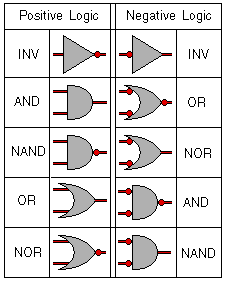Discussion
Home ‣ Computer Science ‣ Digital Computer Electronics Comments
- Question
Which of the following flip-flops is free from race around problem?
Options- A. T flip-flop
- B. SR flip-flop
- C. master slave JK flip-flop
- D. All of the above
- E. None of the above
- Correct Answer
- master slave JK flip-flop
- 1. The time required for a pulse to decrease from 90 to 10 percent of its maximum value is known as
Options- A. rise time
- B. decay time
- C. binary level transition period
- D. propagation delay
- E. None of the above Discuss
- 2. Conversion of decimal number 6710 to it's octal number equivalent is
Options- A. 1008
- B. 1038
- C. 1098
- D. 998
- E. None of the above Discuss
- 3. How many inputs signals can a gate have?
Options- A. one
- B. more than one
- C. two only
- D. both (a) and (b)
- E. None of the above Discuss
- 4. A positive AND gate is also a negative
Options- A. NAND gate
- B. NOR gate
- C. AND gate
- D. OR gate
- E. None of the above Discuss
- 5. An OR gate can be imagined as
Options- A. switches connected in series
- B. switches connected in parallel
- C. MOS transistors connected in series
- D. All of the above
- E. None of the above Discuss
- 6. What logic function is obtained by adding an inverter to the inputs of an AND gate?
Options- A. OR
- B. NAND
- C. XOR
- D. NOR
- E. None of the above Discuss
- 7. A NOR gate has two or more input signals. All input must be _____ to get a high output
Options- A. low
- B. high
- C. some low some high
- D. 1's
- E. None of the above Discuss
- 8. What is the 2's complement of 0011 0101 1001 1100 number?
Options- A. 1100 1010 1100 1011
- B. 1100 1010 0110 0011
- C. 1100 1010 0110 0100
- D. 1100 1010 1111 1111
- E. None of the above Discuss
- 9. Conversion of an octal number 1128 to hexadecimal number is
Options- A. 4A16
- B. 5A16
- C. 1516
- D. 2016
- E. None of the above Discuss
- 10. Conversion of binary number 1010000101112 to hexadecimal number is
Options- A. D8F916
- B. A8B916
- C. A1716
- D. D9F816
- E. None of the above Discuss
Digital Computer Electronics problems
Search Results
Correct Answer: decay time
Correct Answer: 1038
Correct Answer: both (a) and (b)
Correct Answer: OR gate
Explanation:

Correct Answer: switches connected in parallel
Correct Answer: NOR
Correct Answer: low
Correct Answer: 1100 1010 0110 0100
Correct Answer: 4A16
Correct Answer: A1716
Comments
There are no comments.More in Computer Science:
Programming
Copyright ©CuriousTab. All rights reserved.
